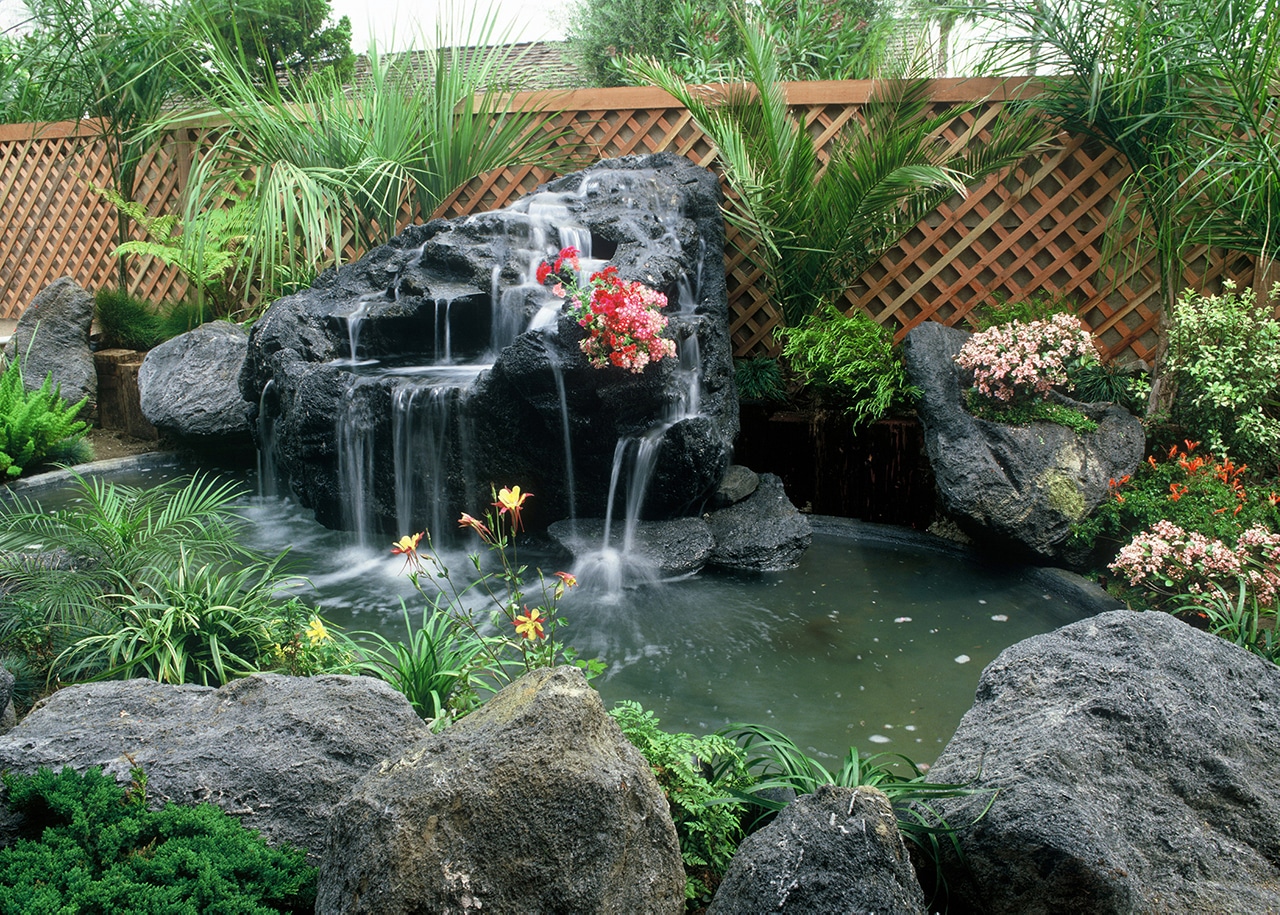
Featherock’s lightweight pumice is perfect for water features. [Photo: Courtesy of Featherock]
Featherock gives us a closer look at how pumice bolsters and enhances design.
When a client contacted landscape and waterfall designer Matthew Giampietro wanting their home covered in boulders, Giampietro knew exactly where to turn—Featherock. The company, named after the lightweight pumice they mine in the Sierra Nevada mountains of California, refers to its namesake product as the “Treasure of the High Sierra.”
Giampietro owns Waterfalls Fountains and Gardens, Inc. in Fort Lauderdale and has always been drawn to the beautiful and porous pumice stone. “It looks like it has always been there,” he says. “Anywhere we put the stone, seeds from plants collect in the pores of the rock and plants start growing out of its cracks and crevices. It’s really neat.”
The family-owned Featherock has been responsibly mining the pumice—a result of volcanoes 40,000 years ago—since the 1940s. Pumice is so lightweight it floats, forming when lava and water mixes together and cools quickly, trapping air bubbles that transform into a frothy glass. “It is interesting that it is glass rather than a proper stone. That makes it really unique among rocks,” says Elizabeth Anderson, third-generation owner/president of Featherock. “Its enduring life, low maintenance, and durability make it an excellent choice for any project.” Anderson’s grandfather worked closely with engineers to determine some of the best ways to utilize the stone.
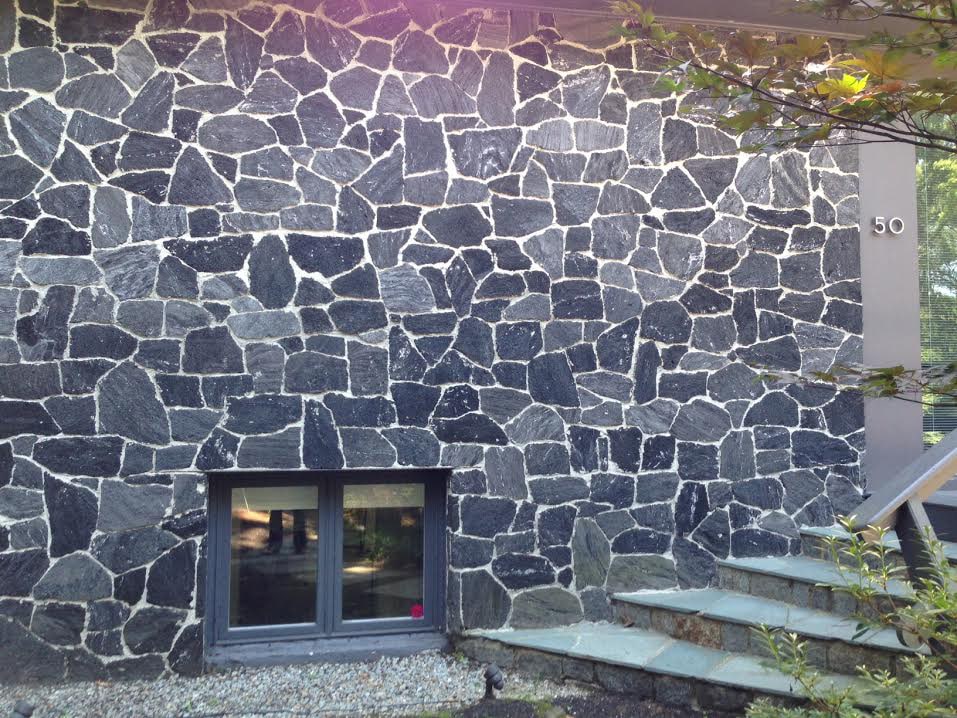
Featherock is easy to cut with simple industry tools, so you can achieve the look you want. [Photo: Matthew Giampietro]
FOR GROUND COVER
Screened into gravel, Featherock’s porous qualities and shades of gray color make it a top choice for ground cover. George MacBeth, owner of Foliage Design Systems of Northern New Jersey and Tri State frequently uses it in place of mulch or moss. “I like the color and consistency of it. It comes in all different shapes and sizes,” he says. The stone’s light weight also makes it easier to transport, saving time
and money.
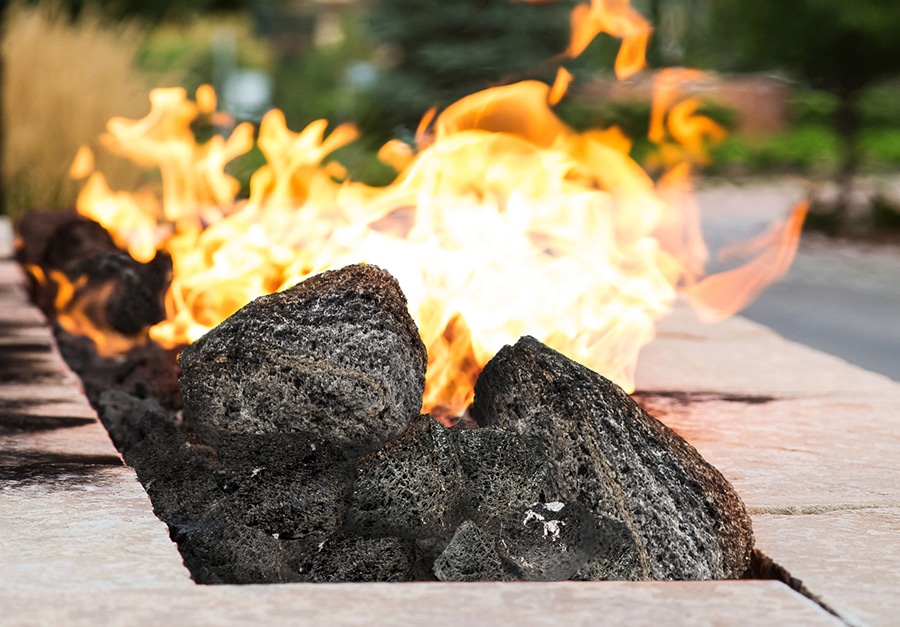
Pumice can withstand temperatures up to 2,300 degrees, making it ideal for firepits. [Photo: Courtesy of Featherock]
FOR FIREPITS
Featherock’s manipulative qualities make it easy to take a large boulder and hollow it out for a firepit. The stone can retain heat and withstand temperatures up to 2,300 degrees. Smaller stones or gravel can also be used for a more modern look or larger stones for a rustic feel. The light to dark charcoal color options help provide a neutral look.
AS PLANTERS
Using minimal tools, anyone can turn a Featherock boulder into a planter, Anderson says. “Simply bore a hole out of it, stick a plant in it, and it becomes a nice statement piece.” The stone is not affected by the seasons, withstanding both freezing and hot temperatures. It naturally breathes due to its porous surface. “You don’t have the root rot you have with other planters
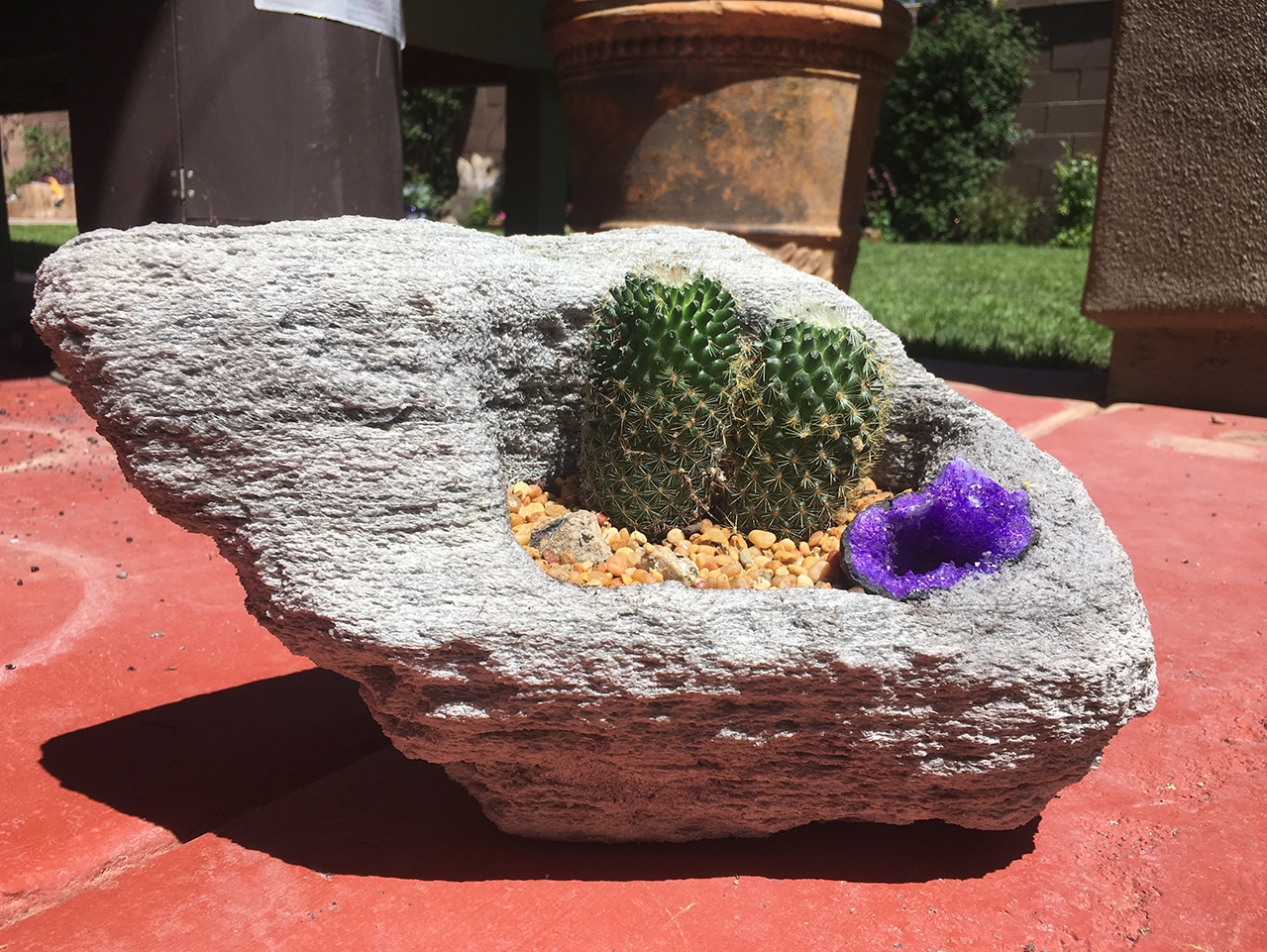
Quickly bore out a hole and the boulder becomes a planter, here with cactus plants and a geode added for effect [Photo: Courtesy of Featherock]
FOR VENEER
Featherock is also a great choice for modern wall coverings. It’s easy to cut onsite, and the stones fit securely to meet your artistic needs. No need for high-end water jet cutting saws—it can be cut with simple industry tools. Create different looks by sanding down the rock or using mortar in between. “There is a great freedom of design aspect you don’t get with other forms of natural stone,” Anderson says. Featherock is also a natural insulator.
ON GREEN ROOFS
Whether looking for drainage, insulation, or simply decoration, Featherock accomplishes all, making it an ideal choice for green roofs. Its light weight gives designers the freedom to add more of the stone for a unique feel, while its porous qualities allow for proper drainage and filtration of stormwater.
Water features can also be created from large Featherock boulders. Moss and other plant life can grow directly on the surface, and the pumice can be easily drilled into if you want to add a water (or fire) element. “It is Mother Nature at its best. You can incorporate all the elements of the earth. It’s very versatile,” Anderson says. The stone can also be used in fish tanks, as it allows beneficial algae to grow.
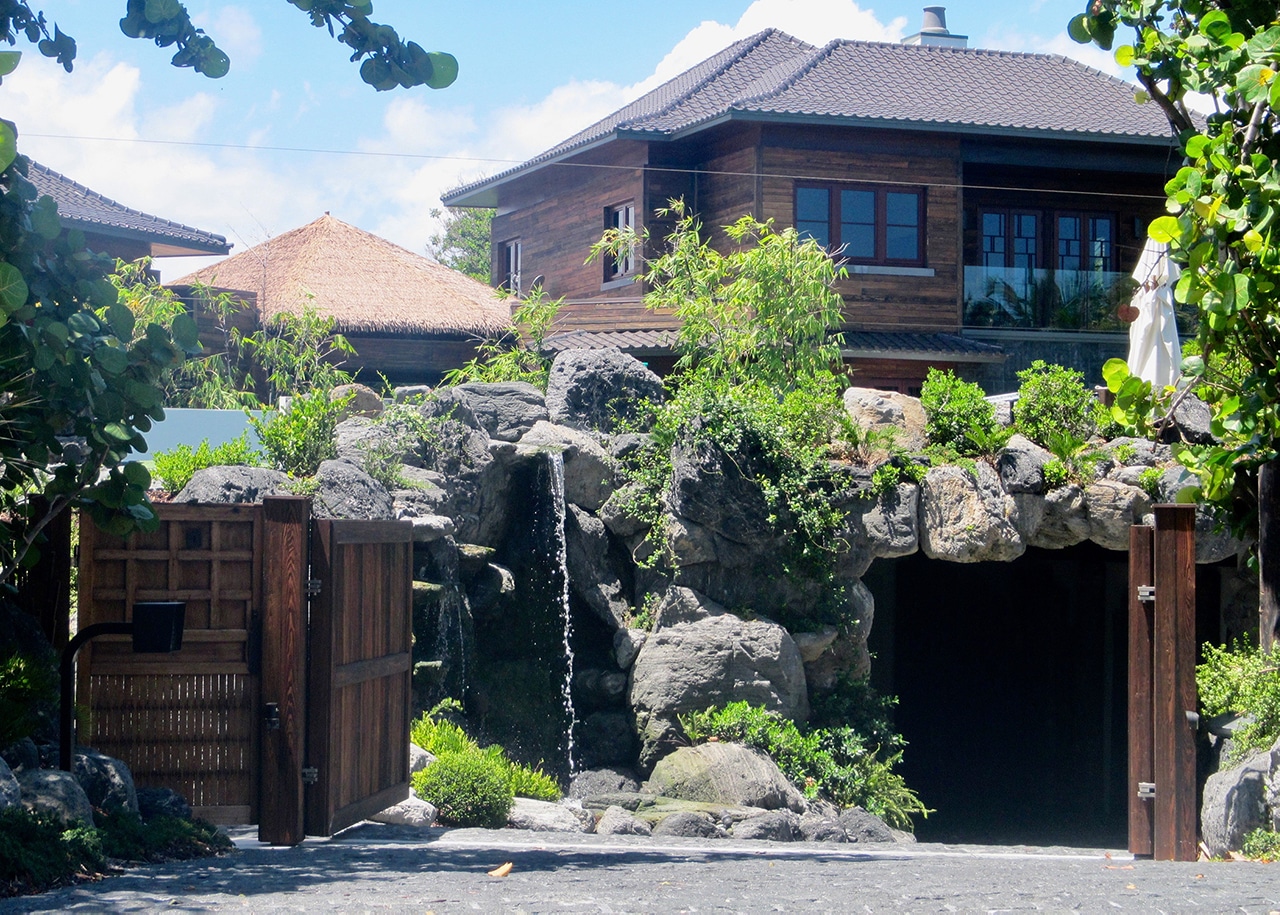
[Photo: Courtesy of Featherock]
AS WATER FEATURES
Water features can also be created from large Featherock boulders. Moss and other plant life can grow directly on the surface, and the pumice can be easily drilled into if you want to add a water (or fire) element. “It is Mother Nature at its best. You can incorporate all the elements of the earth. It’s very versatile,” Anderson says. The stone can also be used in fish tanks, as it allows beneficial algae to grow.
FROM OUR MAR+APR 2019 ISSUE

